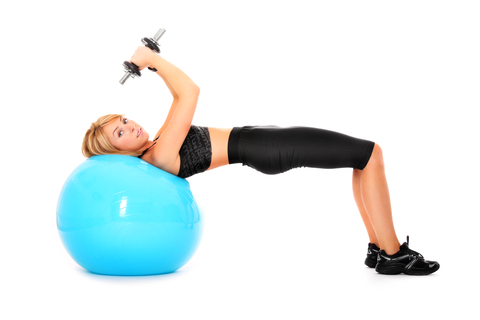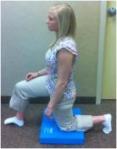 The title statement may seem like a strange concept, but as a Performance Physical Therapist, I can assure you that this is central to my practice. In school we are taught the concept of proximal stability for distal mobility, i.e. you need to have a stable spine and pelvis in order to create and control extremity function. The question that begs to be asked becomes, what tells the “Core” to act, and in what way? How do the proximal stabilizers recognize that my foot is accidentally going to step in a hole or slip on the ice and I am about to strain my back?
The title statement may seem like a strange concept, but as a Performance Physical Therapist, I can assure you that this is central to my practice. In school we are taught the concept of proximal stability for distal mobility, i.e. you need to have a stable spine and pelvis in order to create and control extremity function. The question that begs to be asked becomes, what tells the “Core” to act, and in what way? How do the proximal stabilizers recognize that my foot is accidentally going to step in a hole or slip on the ice and I am about to strain my back?
Intrinsic Muscles
There are a group of small muscles in the foot called the intrinsics. These small muscles are to your foot and ankle joints what the “Core” is to your lumbar spine and pelvis … Or what your grip muscles are to your shoulder and scapular stabilizers. The foot intrinsics activate in rhythmic patterns that allow the foot and ankle to absorb or convert torque and maximize surface contact for increased balance.
In addition, they allow the foot to transition between pronated and supinated positions in order to provide a rigid lever for push off on any surface, and triggers a postural response from the rest of the body … In essence, it is the light switch of the “core”. Unfortunately, the intrinsic muscles are largely ignored by clinicians and researchers. As such, these muscles are seldom addressed in rehabilitation programs. Research by Yanda, determined that an individual with weak or diminished reactivity of their foot intrinsic muscles can have a decrease of up to 40% in speed of reactivity of their “core”. In addition, people with proper intrinsic strength and muscle firing patterns are up to 80% less likely of developing Plantar Fasciitis.
What does this mean? It means that working your “core” in isolation, without integration, and ignoring your intrinsic foot muscles is like building the house of your dreams, hiring the best electrician on Earth, utilizing the best electrical components and wiring, but forgetting to install any light switches. So, If you want to get the most out of your planks, bridges, and crunches, training your foot intrinsics would seem to be in order.
A tremendous number of people are turning to High Intensity Training “HIT” disciplines like Zumba, Aerobics, P90X, Insanity, CrossFit, etc. These disciplines require a incredible amounts of mobility, stability, and integration. The body’s ability to coordinate and promote this type of movement without compensation that could result in injuries, would be significantly enhanced by effective and efficient intrinsic muscle function.
So how can you determine if your foot intrinsic strength and firing patterns need some work?
Can you perform the following movements with ease?
 Big Toe Salutes (lift big toe while keeping other four toes on the floor)
Big Toe Salutes (lift big toe while keeping other four toes on the floor)
 Four Toe Salutes (Lift lateral four toes while keeping the big toe on the floor)
Four Toe Salutes (Lift lateral four toes while keeping the big toe on the floor)
 Short Foot (keeping foot on the floor, pull the base of your toes towards your heel, lifting and tensing the arch without curling the toes)
Short Foot (keeping foot on the floor, pull the base of your toes towards your heel, lifting and tensing the arch without curling the toes)
This can also be performed in sitting
 Toe Splaying (spread all our toes apart)
Toe Splaying (spread all our toes apart)
 Toe Squeezing (put pedicure toe dividers between toes and squeeze)
Toe Squeezing (put pedicure toe dividers between toes and squeeze)
Again, these movements should be effortless. The good news is that the test is also the initial treatment. These are also great watching TV exercises.
- 3 Things We Accomplish At Every First Physical Therapy Session - April 15, 2025
- PT-Approved Tips For Easing Back Into An Exercise Routine - April 14, 2025
- The Causes, Signs And Treatments For Muscular Imbalances - April 9, 2025
